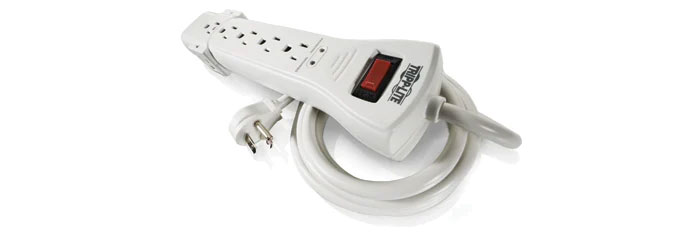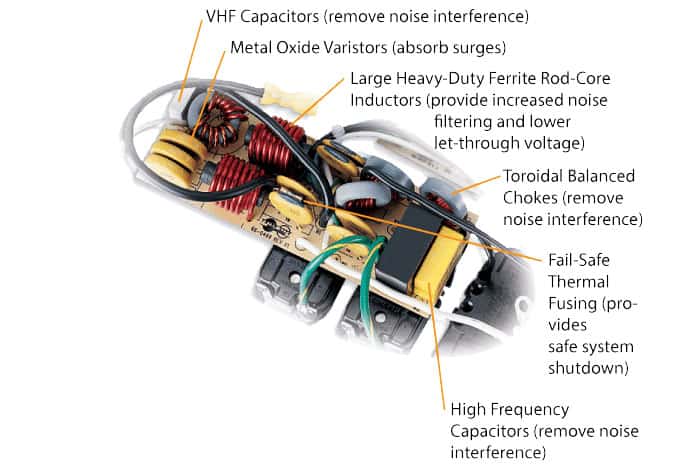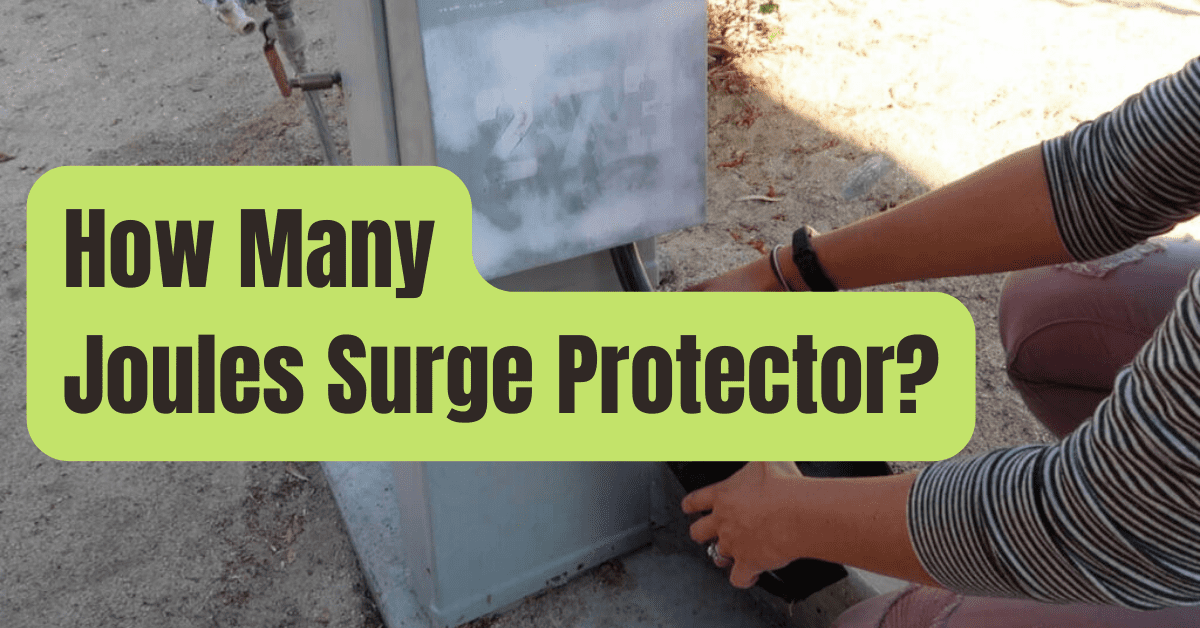The joule rating of the surge protector is likely the most crucial thing to take into account when selecting one, along with the number of outlets, ideal wire length, and features like protection for a coaxial cable connection.

How Do Joules Work?
The amount of energy emitted over time is measured in joules.
For instance, a typical lightning strike dissipates one billion joules of energy over the course of a split second.
The amount of energy that a surge protector can withstand before failing is indicated by its joule rating.
The surge protection given increases with the joule count.
The kind and value of the equipment that has to be safeguarded are important factors in figuring out how much protection is required.
A Higher Joule Rating Is Required For Valuable Equipment.
How much surge protection do I need, you may be thinking.
Naturally, the surge protector’s joule rating must be greater the more expensive your equipment is.
Surge protection is beneficial for any item that plugs into an AC outlet, although less costly parts like lights, digital clocks, and blenders don’t need a high degree of protection.
For these little devices, a unit with up to 1000 joules of surge protection is sufficient.
Some components don’t hold a lot of data, but they do feature sensitive circuitry that has to be protected.
Power tools and office equipment including printers, copiers, and routers will be adequately protected by surge protectors with ratings of 1000 to 2000 joules.
For home theater equipment, gaming consoles, and any computer that contains crucial data, such as customer lists, financial records, priceless photographs, and personal records, the highest joule ratings—2000 and above—should be taken into consideration.
Another Factor Is Location.
A greater degree of protection is necessary in places where lightning storms occur often.
However, not all of the surges damaging your equipment are the result of Mother Nature.
Power spikes may also be caused by issues with the utility provider.
Tools and large machinery may produce destructive surges and line interference in industrial settings.
Up to 80% of all surges start within the house or business, even in the most peaceful residential area.
Small surges that you may not notice can damage your devices when power tools start up, the air conditioner cycles on, or even when the refrigerator or oven turns on and off.
These kinds of voltage spikes cannot be stopped by a whole-house surge prevention system.
The Function of a Surge Protector
Surge protectors decrease excess voltage when it exceeds a safe threshold in order to prevent it from harming anything.
The excess voltage is specifically absorbed and safely diverted to the ground wire by internal parts known as metal oxide varistors (MOVs), preventing it from reaching the connected device.

Are You Still Able To Use Your Surge Protector?
Surge protectors don’t show the amount of protection in joules, but the majority of devices come with an LED that indicates protection is there.
When the surge protector is tucked away behind a piece of furniture or behind a desk, these lights could go unnoticed or be hidden.
Surge protectors do not last a lifetime.
Today is an excellent moment to make a minor investment in new surge protectors and get more peace of mind, especially if you’ve had a significant electrical incident, like lightning that caused a power outage, or if your devices have been in use for a while.










